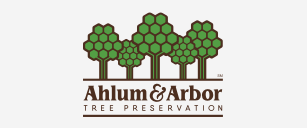Learn how to identify and name evergreen trees.
Is it a pine tree? Is it a spruce? A conifer? It’s an evergreen! There are numerous different names for the common ‘Christmas-tree-like’ foliage that grows throughout our great state, but we are here to clear up some of the confusion.
A tree that keeps its leaves, or needles, all year long is called an evergreen. Those that lose their leaves are deciduous trees. Most evergreens, however, produce seed bearing cones and are therefore considered conifers. There are eight separate families of conifers worldwide and about 615 different species. The largest of these families is Pinanacae, containing trees like pine, spruce, and fir.
To make things more complicated, there are also more than 20 deciduous conifer species that drop their needles every winter, therefore cannot be classified as an evergreen.
Much like deciduous trees, such as oak or maple trees, evergreens each have their own characteristics and names. Let’s talk about some of Ohio’s most common evergreen trees…
Spruce
Spruce tree branches tend to grow upward, versus outward, with smooth flexible cones that fall towards the ground. Spruce needles are four sided and attached at a singular point. There are two main types of spruce trees in Ohio:
- Norway spruce: short, dark green needles. This tree does very well in Ohio soil and climate
- Blue spruce: short blue needles. This tree does better in dryer climates
Fir
Fir trees have flat, two-sided needles, often with two white stripes on the bottom. Fir needles are attached to the branch by a suction-cup-like attachments. Their cones grow upward. There are two main types of fir trees in Ohio:
- Canaan fir: short, dark green needles with a bluish tint
- Concolour fir: long blue needles
Pine
Pine trees have fewer branches than spruce or fir trees and the branches tend to grow from the same circular place on the trunk. Their cones are woody and tend to grow towards the ground. There are three main types of pine trees in Ohio:
- White pine: long soft needles in groups of five. This tree does best in non-clay soils
- Austrian pine: long stiff needles in groups of two
- Scotch pine: medium length stiff needles in groups of two. Mature trees often have orange colored bark on the top half of the tree
Arborvitae
Arborvitae have flat, green needles with flexible branches and are often used for privacy hedges because of their shape.
Juniper
Junipers have stiff and sharp needles and can quickly be recognized by their berry-like fruit.
Let us know if you ever have any questions about which tree is best for you to plant! All of these evergreens can give your yard some life during our long winter months, while providing protection for birds and other wildlife.
Now you can go impress your neighbor by asking them “what kind of evergreen do you have in your yard?”

